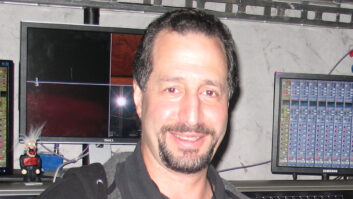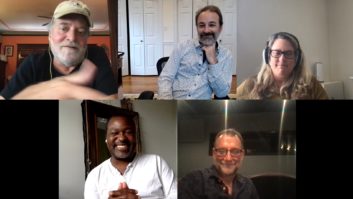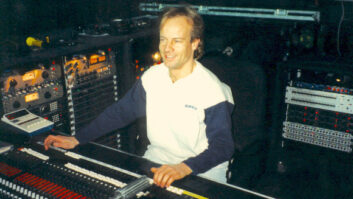— Coming off their first number-one album and single for country artist Jerrod Niemann, Brainard and Kolb are applying CLASP®’s unique true analog front end recording solution to tracks for up-and-coming artist Ray Scott’s next record—

The remarkable CLASP® (Closed Loop Analog Signal Processor) system from Nashville-based Endless Analog, has reinvented analog tape recording for the digital age, and it has opened up other production techniques never before possible: namely, processing digitally-recorded audio to analog tape and back to the DAW, using variable tape speeds within the same session. Analog tape remains the gold standard for sonic quality of music recording, but tape’s linear nature had always meant that it could run at only one of several standard speeds on any one set of tracks – 7.5, 15 or 30 inches per second (ips).
Producers and engineers had to make a choice between using
the slower 15 ips to enhance low frequencies or 30 ips to accentuate upper mids and high frequencies. But as producer Dave Brainard and engineer Brian Kolb discovered on a recent project for promising new country artist Ray Scott at Mix Dream Studios in Nashville, CLASP lets them apply analog’s sonic magic at any speed to any individual track. This offers a sonic advantage to every project and is something that generations of analog recording professionals could only dream about. Thanks to CLASP, that revolutionary ability is now a reality.
Just coming off their first number-one debut country album (Judge Jerrod and the Hung Jury) and number one debut country single (“Lover, Lover�) for country artist Jerrod Lee Niemann, Brainard and Kolb are working on Pro Tools systems in separate control rooms at Mix Dream Studios. When overdubs are finished, they begin to run individual tracks, up to four at a time, to a vintage Studer A807 MkII ½-inch 4-track deck via CLASP. “The advantage here is that we can take a single track or group of tracks and listen to them individually as they go to tape from the Pro Tools environment,� Brainard explains. “We can process the bass guitar at 7.5 ips, greatly adding to the low-frequency effectiveness, and the kick drum at 15 or 30 ips, which lets it retain the transient that gives it its punch. We can also see how each track reacts to different kinds of analog processing – tape speed, saturation, compression and so on – and treat it for maximum effectiveness. The idea of being able to have different tape speeds on the same song is incredible. Every track gets exactly what it needs.�
Brian Kolb, who mixed Scott’s record and others at Mix Dream using CLASP, says he applies it to virtually every kind of track. “I have clients who come in to listen to a mix and they tell me they’ve never heard their vocals sound so good,� he says, noting that a vocal for country and gospel singer Sonia Isaacs was recorded and mixed with absolutely no EQ, with the only processing coming through the CLASP system and tape. “She agreed that it sounded amazing,� says Kolb. He also applied CLASP to the entire song on a tracking session recently at Ocean Way Studios in Nashville. “We did the drums at 30 ips and processed the lower-key songs at 15 ips. It was amazing to have that kind of control with such great-sounding processing.�
Brainard says the options that CLASP offers are nothing short of incredible. “No one could have imagined being able to use multiple tape speeds on the same song years ago,� he says, adding that there’s never an issue of synching tracks back up, thanks to CLASP’s proprietary SST® sample synchronization technology. “CLASP is just a fantastic system to work with. It puts a big old smile on my face.�
For more information, please visit www.endlessanalog.com







